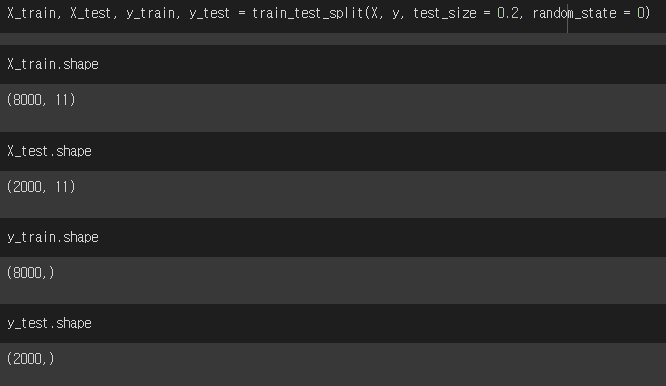def build_model():
model = Sequential()
model.add(Dense(units = 4, activation = 'relu', input_shape = (8, )))
model.add(Dense(units = 20, activation = 'relu'))
model.add(Dense(units = 10, activation = 'relu'))
model.add(Dense(units = 1, activation = 'linear'))
# 옵티마이저의 learning rate를 설정하는 방법
model.compile(tf.keras.optimizers.RMSprop(learning_rate = 0.001), loss = 'mse', metrics = ['mse', 'mae'])
#model.compile('adam', 'mse')
return model
model = build_model()
early_stop = tf.keras.callbacks.EarlyStopping(monitor = 'val_loss', patience = 10)
epoch_history = model.fit(X_train, y_train, epochs = 100000, validation_split = 0.2, callbacks = [early_stop])
# 콜백이란?? 프레임워크가 실행하는 코드. 코드 실행을 프레임워크에 맡기는 것monitor 파라미터에는 감시할 평가 데이터를 대입하고 patience에는 몇번 동안 개선이 없으면 학습을 중단할 건지 대입한다. 이걸 fit의 callbacks에 배열로 대입하면 된다.epochs에 십만을 대입했지만 실제로는 200번대 에서 중단했다.

'인공지능 > 텐서플로우' 카테고리의 다른 글
| 여러 클래스로 분류할 때, 아웃풋 노드에서 사용하는 액티베이션 함수 softmax (0) | 2022.06.13 |
|---|---|
| Flatten 라이브러리 사용하는 이유 (0) | 2022.06.13 |
| validation 데이터란 무엇이고 코드에서 사용하는 방법 (validation_split) (0) | 2022.06.13 |
| learning rate를 옵티마이저에서 셋팅하는 방법 (0) | 2022.06.13 |
| tensorflow GridSearch를 이용한, 최적의 하이퍼 파라미터 찾기 (0) | 2022.06.10 |


